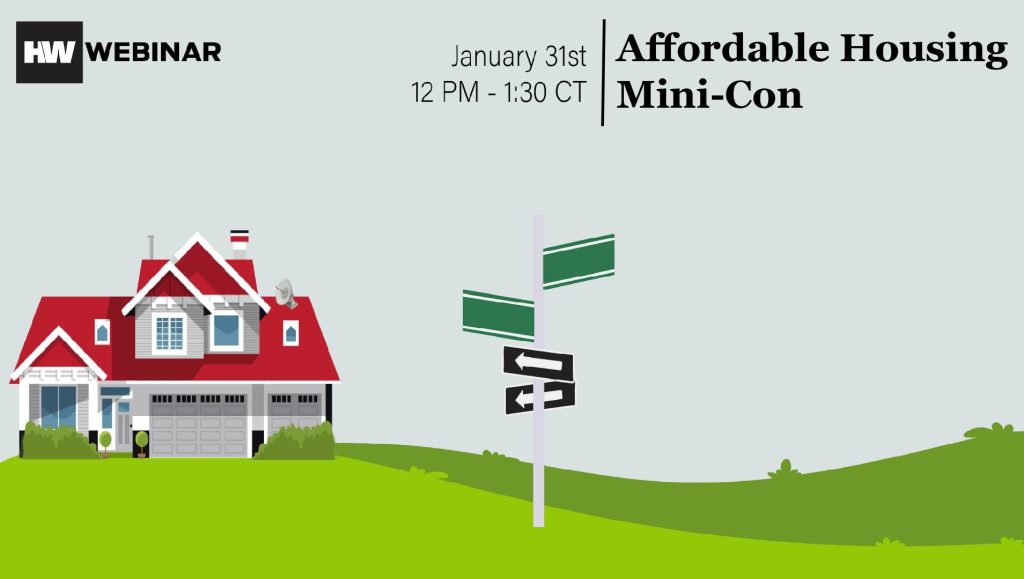With a turbulent housing market and a volatile rate environment playing out over much of the past year, concern about housing affordability has hit a fever pitch. Three housing policy experts recently joined HW Media COO Diego Sanchez to discuss the potential shifts in housing affordability over the next year.
The panel took place during HousingWire’s Affordable Housing Mini-Con and featured Laurie Goodman of the Urban Institute, Faith Schwartz of Housing Finance Strategies and Jim Gray of the Lincoln Institute of Land Policy. When asked about “good news” on the front of housing affordability, all three panelists described how active work by the federal government on affordability issues is an encouraging development.
“We have [seen] a big effort by the government, more than we’ve ever seen before, making this squarely a top priority for the administration, which puts a lot of force and power into HUD, Ginnie Mae, FHA, VA, and the government to help the industry move forward,” Schwartz said.
Goodman felt that the trend in home prices was a generally positive sign, saying that the “worst” of housing affordability has likely passed due to the moderation of prices and the generally rising trend of wages, which appears to be outpacing home price appreciation.
“I’d expect wage growth to considerably outpace HPA over the next year, which is going to bring affordability more into line,” she said.
While interest rates are likely to continue to rise over the course of the year, mortgage spreads are unusually wide. Rates are linked to the 10-year Treasury rate plus mortgage spreads, which could lead to a more favorable rate environment, she explained.
“It’s very possible that you actually have 10-year rates rise a little bit and spreads [contracting] to more normal levels, and mortgage rates [could] actually fall over the course of the next year,” she said.
Gray concurred with Schwartz regarding the stewardship of the housing system by Biden administration officials, highlighting FHA Commissioner Julia Gordon and Ginnie Mae President Alanna McCargo‘s efforts to boost affordability.
“I think people are starting to see that there really is a lot more that can be done when you can just even minimally make changes in the credit box that Fannie Mae and Freddie Mac have so much power over,” he said.
There is still room for further government action, Schwartz said, particularly due to its influence on housing policy. But adding more private dollars to the mix can also help improve the affordability situation for many Americans who feel shut out of the homebuying process.
“Private capital should be brought in at reasonable returns with guardrails to protect the consumer and help us execute on some innovative programs,” she said. “Underwriting, trend-to-data, utilities [and more]. While we’re scratching the surface, it’s not materially changing things. But all these little additions can really make a substantial difference for people of color who don’t have homeownership.”
Goodman agreed, saying that a broadening of the credit box and holding default probability to a constant could be beneficial to improve affordability, while also recognizing that the loss mitigation options available to borrowers has grown significantly in the last two years.
She also added that for seniors who wish to age in place in their own homes, it could be beneficial for Medicare to be able to fund home modifications to better accommodate the naturally-diminishing mobility that occurs as people get older.
“Accidents are a huge issue,” she said. Very few seniors have their houses fit for this stage of their life. I actually think it could be […] very cost-effective to have Medicare in particular pay for grab bars, so you don’t trip in the shower and or toilet seat extenders. There are certain things that you can do very cheaply and easily assuming people want to age in place.”
Accessory dwelling units (ADUs) are also a potential solution for senior housing issues, she said. Gray added that broadly speaking, manufactured housing could become a more prominent solution to impact housing affordability in the U.S. as long as four key issues are addressed: financing, land issues, exclusionary zoning and energy efficiency.





